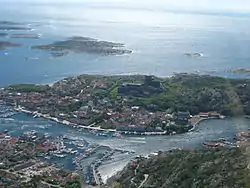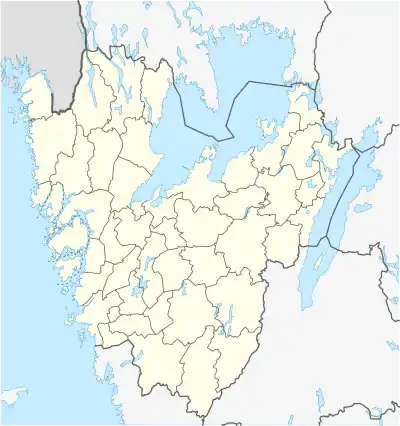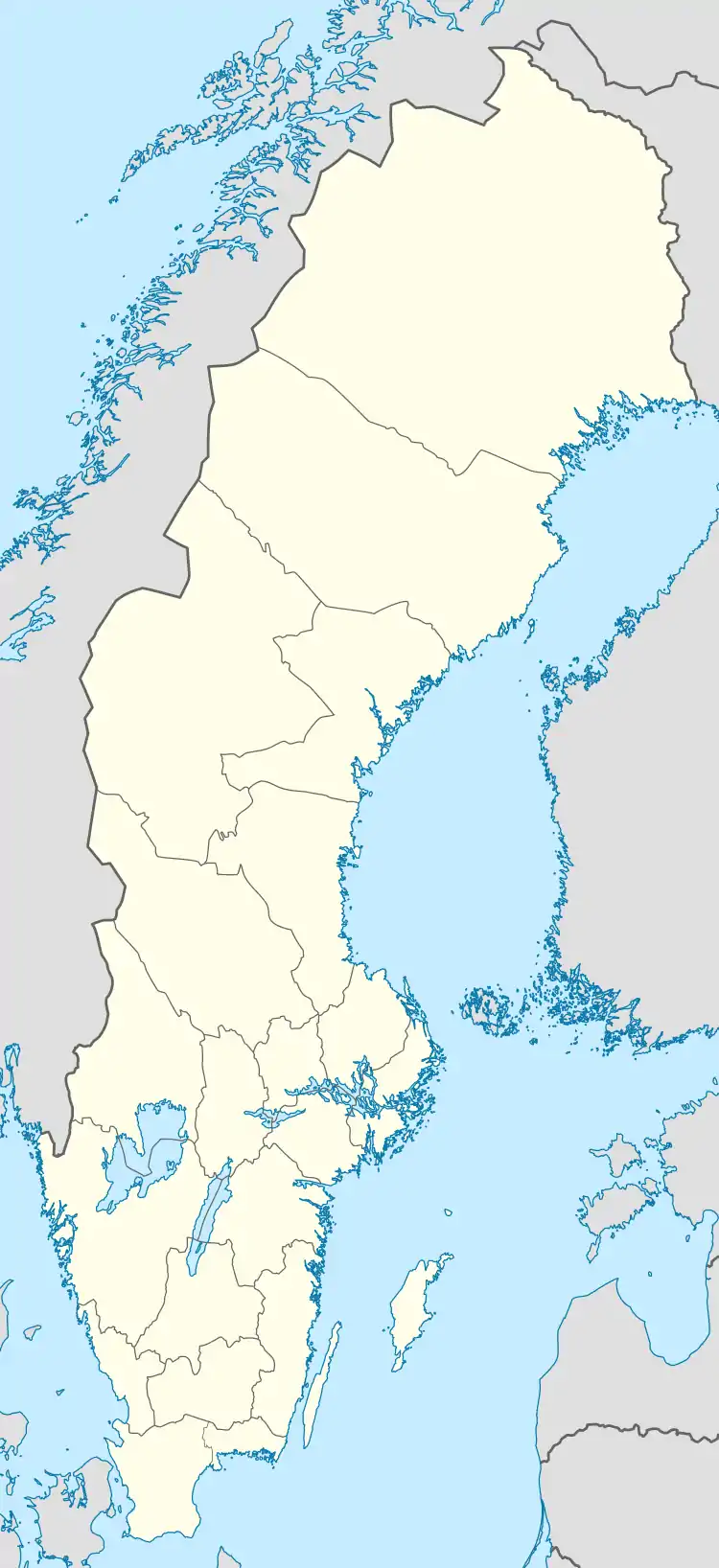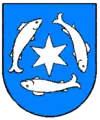Marstrand
Marstrand (Swedish pronunciation: [ˈmâʂːtrand])[2] is a seaside locality situated in Kungälv Municipality, Västra Götaland County, Sweden. It had 1,319 inhabitants in 2010.[1] The town got its name from its location on the island of Marstrand. Despite its small population, for historical reasons Marstrand is often referred to as a city. The town has expanded to the neighbouring island of Koön, which has bridge access to the mainland.
Marstrand | |
|---|---|
 Aerial view of Marstrand | |
 Marstrand  Marstrand | |
| Coordinates: 57°53′N 11°35′E | |
| Country | Sweden |
| Province | Bohuslän |
| County | Västra Götaland County |
| Municipality | Kungälv Municipality |
| Area | |
| • Total | 0.88 km2 (0.34 sq mi) |
| Population (31 December 2010)[1] | |
| • Total | 1,319 |
| • Density | 1,507/km2 (3,900/sq mi) |
| Time zone | UTC+1 (CET) |
| • Summer (DST) | UTC+2 (CEST) |

History
Marstrand has held city privileges since 1200. The most striking feature of Marstrand is the 17th-century fortress Carlsten, named for King Carl X Gustav of Sweden.
During the last quarter of the 18th century Marstrand had free port status granted by King Gustav III. Religious liberty established by the same sovereign allowed the first Swedish congregation of Jews to be established there in 1775[3] and Scandinavia's first synagogue to be set up in the fortress in 1780.
Administratively Marstrand with immediately surrounding islands was a municipality of its own until the local government reform of 1971 when it was merged into Kungälv Municipality.
Sports
Sailing
Being an island makes Marstrand popular for sailing and boat races.
Marstrand is the host venue for Match Cup Sweden, part of the World Match Racing Tour. The event draws international sailing teams to Marstrand. DS-37 boats are raced two at a time. Points accrued count towards the World Match Racing Tour and a place in the final event, with the overall winner taking the title ISAF World Match Racing Tour Champion. Match racing is well suited to Marstand. Highlights of the events are broadcast on Eurosport television and via the official World Match Racing Tour website.
See also
References
- "Tätorternas landareal, folkmängd och invånare per km2 2005 och 2010" (in Swedish). Statistics Sweden. 14 December 2011. Archived from the original on 27 January 2012. Retrieved 10 January 2012.
- Jöran Sahlgren; Gösta Bergman (1979). Svenska ortnamn med uttalsuppgifter (in Swedish). p. 17.
- Pages by the Swedish Tax Authority on historical congregations
External links
| Wikimedia Commons has media related to Marstrand. |
- Marstrand - From Kungälv Municipality official page
- (in Swedish) article Marstrand from Nordisk Familjebok (1912)